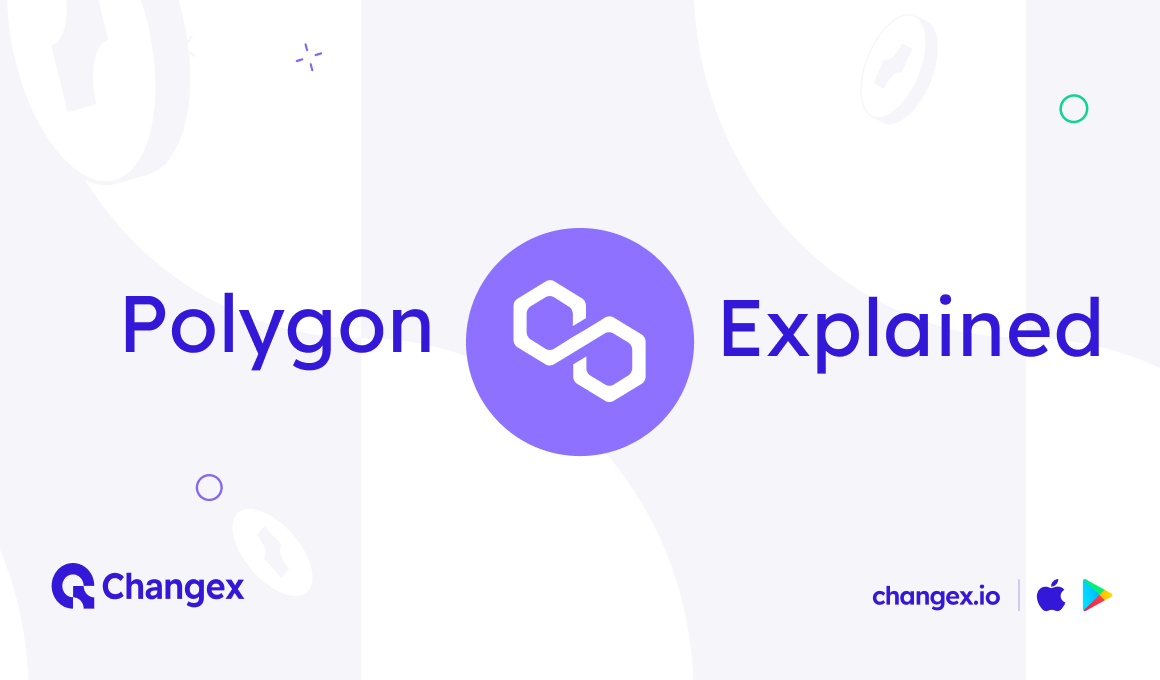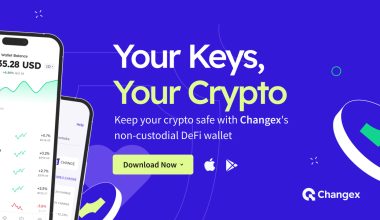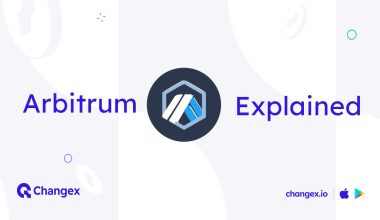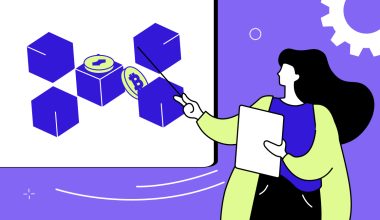The Polygon chain is now one of six supported blockchain networks in the Changex DeFi wallet. It is also one of the biggest and most important Layer 2 solutions for the Ethereum network, but in order to understand its benefits and potential a deeper exploration of the chain is needed. In this explainer, we will go in-depth about the network’s goals, mechanisms, benefits, and use cases.
Take a deep breath and let’s go.
In this article
Introduction to Polygon
The Polygon network, formerly known as the Matic Network, is a Proof-of-Stake blockchain and a Layer 2 scaling solution for Ethereum which aims to improve Ethereum’s scalability, speed, and cost of transaction fees.
The Polygon network’s architecture is composed of four main components, which are also commonly called layers.
The first of these is the Ethereum layer
You’ll also see it called the “base layer” of the Polygon network. It uses the Ethereum network as the underlying blockchain and leverages its security, decentralization, and smart contract capabilities.
The Polygon Proof-of-Stake Chain is the second layer
This is a separate blockchain that runs in parallel to the Ethereum Layer. It uses a modified version of the Ethereum Proof-of-Stake consensus algorithm to validate transactions and achieve high throughput of the network.
Polygon Plasma Chains constitute the third layer
Plasma Chains are a series of independent sidechains that are built on top of the Polygon POS Chain (don’t worry, we will explain below). These chains enable fast and low-cost transactions and provide an environment for DApps to run with high speed and scalability.
The fourth layer is the Polygon Software Development Kit (SDK)
The Polygon SDK is a set of tools and protocols that developers can use to build and deploy their DApps on the Polygon network. The SDK includes a range of features such as the Polygon Bridge, which allows for seamless interoperability between Ethereum and Polygon networks, and the Polygon POS Chain API, which provides developers with access to the POS Chain’s functionality.
The Goal
Polygon’s aim is to provide a cost-effective and fast solution to Ethereum’s problems, and by employing this 4-layer architecture, it intends to do it while preserving Ethereum’s decentralized and highly secure nature. It also strives to make the most of the existing solutions on the Ethereum framework, as well as to harness the potential of its developer community.
The Polygon blockchain also supports interoperability with other blockchains, enabling developers to build Dapps that can interact with multiple blockchains. This feature enhances the flexibility of the network and expands its use cases.
MATIC can now easily be bought, stored, and transferred to and from the Changex non-custodial DeFi wallet.
Get Changex, stay decentralized:
So, how does Polygon work?
Polygon utilizes a combination of sidechains – smaller blockchains that operate alongside the main Ethereum chain – for off-chain computation, along with a decentralized network of Proof-of-Stake (PoS) validators. Its main solutions combine the use of Plasma and Optimistic Rollups.
So what does that mean in understandable human language?
Plasma is a Layer 2 scaling solution that enables Polygon to process transactions off-chain. Plasma chains are essentially smaller, individual blockchains (or sidechains) that operate on top of the main Polygon POS chain. Each Plasma chain operates with its own set of rules and is capable of processing a large number of transactions quickly and cost-effectively. Transactions are secured by cryptographic proofs and are broadcast to the main chain for verification and final settlement. Only the final state of the transactions is recorded on the Ethereum blockchain, therefore reducing the load on the Ethereum network significantly.
Optimistic Rollups, on the other hand, enable Polygon to bundle multiple transactions into a single transaction, reducing the gas fees substantially. Optimistic Rollups work by creating a separate off-chain network where transactions are processed and verified. This network is called the “optimistic rollup” and it can process a large number of transactions in a single batch. Once the batch is complete, a cryptographic proof is generated and submitted to the Ethereum main chain for validation.
The Polygon zkEVM explained briefly
zkEVM is one of those intimidating, unintelligible abbreviations, but we’ll have it making sense in no time. Here’s the gist of it.
Polygon zkEVM is another Layer 2 scaling solution for Ethereum that uses zero-knowledge proofs (zk-proofs) to increase the scalability and reduce the transaction fees of the Ethereum network.
So, zk-proofs – what is even that? Then again, what is a proof? When it comes to computer science, a proof is a way of demonstrating the validity of a statement. A zero-knowledge proof is a type of proof where the prover can demonstrate the truth of a statement to the verifier without revealing any additional information beyond the statement itself.
In the context of blockchain, zk-proofs can be used to validate transactions without requiring all nodes on the network to process them. This can significantly increase the throughput of the network, as well as reduce transaction fees.
Put quite simply, Polygon zkEVM is a technology that allows for faster and cheaper transactions on Ethereum, by using a different type of proof to validate them.
With Polygon zkEVM, users can execute transactions and run smart contracts without exposing their data to third parties, ensuring confidentiality and privacy. This technology also offers high scalability and low transaction costs, making it a promising solution for decentralized applications that require privacy and efficiency.
The best thing about zkEVM is that it is compatible with most dApps and wallets currently running on Ethereum, so no need to worry about compatibility issues. The zkEVM beta actually launched this week – on 27 March.
What Polygon brings to Ethereum’s table
Well, a lot.
Scalability
The network has achieved up to 10,000 transactions per second (TPS) on a single sidechain on the testnet, offering a much higher throughput when compared to the Ethereum network. Even today, Ethereum finds itself peaking at about 20 TPS.
Speed
By processing transactions off-chain and bundling multiple transactions into a single transaction, Polygon can significantly reduce transaction times, resulting in a better user experience.
Low transaction fees
The use of Layer 2 scaling solutions enables Polygon to significantly reduce gas fees, making it more accessible to a wider audience.
Compatibility
Polygon is built on top of Ethereum, making it compatible with existing Ethereum dApps and infrastructure.
Decentralization
Polygon is an open-source, decentralized framework that is community-driven, and it provides developers with a secure and transparent platform.
Access to liquidity
The Polygon network has a growing ecosystem of decentralized exchanges and liquidity providers, which makes it easier for developers to build applications that require access to liquidity.
Use cases
Decentralized Finance (DeFi)
The Polygon network is particularly well-suited for DeFi applications, where high transaction throughput and low fees are crucial. Many successful DeFi projects, such as Aave, Curve Finance, and SushiSwap, have migrated to the Polygon network to take advantage of its scalability and low transaction costs. In addition, the Polygon network offers a growing list of DeFi tools and services, such as the QuickSwap DEX and the Polygon Bridge, which enables the seamless transfer of assets between Ethereum and Polygon.
Non-Fungible Tokens (NFTs)
NFTs are unique digital assets that can be traded on blockchain networks, and the Polygon network’s fast and affordable transactions make it an ideal platform for NFT creation, trading, and exchange. Polygon-based NFT marketplaces include OpenSea, Rarible, and SuperFarm, so there’s a lot happening there already. Their explosive growth has already validated Polygon as an NFT-friendly powerhouse.
Gaming
The Polygon network’s high scalability and low fees make it an attractive platform for gaming applications, where fast transaction confirmations and low fees are essential. Several gaming Dapps have already launched on the Polygon network, such as the popular game Aavegotchi, which combines DeFi and NFTs with gaming mechanics.
Enterprise blockchain solutions
Polygon’s ability to interact with other blockchains enables businesses to integrate their existing systems with blockchain technology more easily, while the low transaction fees and fast confirmations enable efficient and cost-effective transactions.
Micropayments
The Polygon network’s low fees and fast confirmations make it well-suited for micropayments, where small amounts of cryptocurrency are exchanged for digital goods or services. This opens up new possibilities for micropayments-based business models, such as pay-per-use services or micro-donations.
The MATIC token
MATIC is the native token of the Polygon ecosystem and it serves as the primary medium of exchange within the network.
MATIC is an ERC-20 token, which means it is built on the Ethereum blockchain and can be stored in any wallet that supports ERC-20 tokens. The token is used to pay for transaction fees, gas fees, and other fees on the Matic Network. It can also be used for staking, which involves locking up MATIC tokens to support the network and earn rewards.
With MATIC, you can seamlessly move your assets between different chains and dApps, while enjoying lightning-fast speeds and minimal transaction fees. But MATIC isn’t just a means of exchange – it can be staked to support the network and earn rewards.
It has several use cases:
- Transaction fees: Users can use MATIC to pay for transaction fees on the Polygon network. This enables users to make transactions at a lower cost compared to using Ethereum.
- Staking: MATIC can be staked to participate in the network’s Proof-of-Stake consensus mechanism. Stakers earn rewards in the form of more MATIC tokens for securing the network.
- Governance: MATIC token holders can participate in the governance of the Polygon ecosystem. They can vote on proposals to improve the network, such as protocol upgrades and changes.
- Liquidity: MATIC is listed on several major cryptocurrency exchanges, providing liquidity for investors and traders.
As you can see, the Polygon network is a powerhouse of a blockchain that offers various use cases not only on paper, but also when put to the test – 7,000 TPS is not to be taken lightly. The MATIC token is also rich in functionality and can be staked to earn passive rewards, while also allowing holders to vote and participate in governance of the ecosystem.
We hope you’ve found this article interesting and useful.
Thank you for reading,
The Changex team







38 comments
This is really interesting, I love this project!
Really good information, thank you
Its really informative and give readers alot of information that they need know. good job!!
Polygon integration is just one of the many steps to a successful Changexapp – Bravo, well done 🙂
Polygon is great and is positioned for huge growth. I think NFTs will grow particularly well there.
Been using Changex for a while now. Personally love it and I can’t wait to see the banking part active too.
Interesting to follow the progress closely as I believe ChangeX offers a great solution to current Centralised exchanges. Following th eprogress closely, big potential!
Can’t wait for the future of this project
Thank you for the detailed information. It’s simply an impressive article.
Good project, currently Changex DeFi wallet has been integrated with polygon chain. Keep building!!
Wow this is amazing, thank you for your information.
thanks for explaining about POLYGon with all the details its really helpful
Wow, this article is so packed with information.
Excellent explanation, very detailed, thank you for this information.
Thanks for letting us know all of these. Such a good way to give us knowledge
Can’t wait for the future of this project
Really excited about this one. thank you for this good explantion.
Wow this is cool ARTICLE, very detailed. Thank u for the information
Cool article, i love this article
Awesome
I like polygon for its low cost
This article is very helpful and definitely good information
this article is so packed with information.
Good luck.
Love this great project, keep it up.
GOOD EXPLANATION FOR USER
Josss
Amazing
i Learned a lot from this Blog post. Thank you. Will continue supporting your projeCt
I learned so much from this blog post. Will continue supporting the prOject
Nice
I’ve been reading a few articles in the blog and I could say that you have an amazing writers! Keep that great work up!
POlygon is a great addition, super fast chain and affordable transaction fees too
Nice
Amazing!
interesting!
Great thanks!
That’s a great article on how polygon network works. nice job.
very good